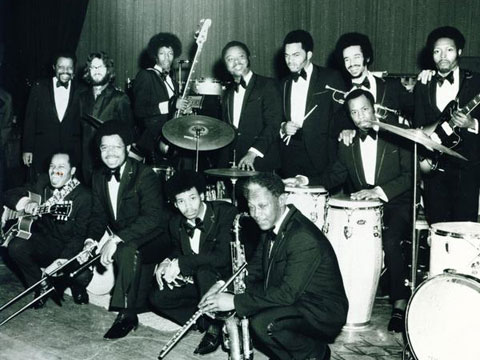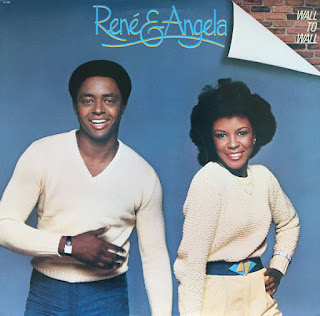1.
Janelle Monae—“Electric Lady.”
Monae moves more directly into modern R&B with this release, but
keeps in place her penchant for experimentalism and intricate lyrics, while
guest stars like Erykah Badu, Miguel and Prince (!) liven up the mix with their
own unique talents. Certainly the record
that I was awaiting most eagerly this year, and it did not disappoint.
2. Elvis
Costello & The Roots—“Wise Up Ghost.”
Bringing together the very best of what both artists do individually,
this collaborative album works surprisingly well, with Costello’s dense,
intellectual lyrics the perfect foil for The Roots’ expert, edgy
musicianship. There’s a sinister and
smooth undertone to the sound they create together, and it’s fantastic.
3. Los
Amigos Invisibles—“Repeat After Me.” The
now-veteran disco-funk combo from Venezuela returns with another gem of a
record, ranging in sound from Motown shuffles to Latin-funk-fusion to
disco-funk-psychedelia. Guitarist Jose
Luis Pardo produces, and his instincts help the group to create what may very
well be their best album yet.
4. Jose
James—“No Beginning No End.” This album
is so damn sexy it’ll make any couple lock up their doors and turn down the
lights the minute it’s on the stereo.
Jose James’ voice is pure silk, while his grooves reinvent the whole
jazzy neo-soul vibe, adding new elements to what had become a somewhat
overplayed sound. Subtle brilliance.
5.
Coultrain—“Jungle Mumbo Jumbo.” Surreal,
modern psychedelic soul from Coultrain, the mastermind behind The Hawthorne
Headhunters. Coultrain deals here in
heavily spaced-out textures and tones, while his careening, caressing voice adds
precise, soulful detail to each track. A
trip worth taking.
6. Hiatus
Kaiyote—“Tawk Tomahawk.” One of the more
interesting soul-based records I’ve heard in a while, from Australia’s Hiatus
Kaiyote. Somewhere in between Stepney’s
Rotary Connection and D’Angelo, this group has a curious chemistry that somehow
sounds retro and new all at the same time.
7.
Bilal—“A Love Surreal.” Bilal
pulls back on some of the more scattershot impulses of his previous “Airtight’s
Revenge” to create a leaner, more focused variation on “Revenge’s” visionary
expansiveness. Bilal’s voice is still
the greatest weapon in his musical arsenal, one of the most versatile vocal
styles in all current music. Mandatory
listening.
8.
Charles Bradley—“Victim Of Love.”
Vintage retro-soul from NYC’s Daptone/Desco crew, fronted by long-time
soul-singing pro Charles Bradley.
Bradley’s scratchy vocals ride atop the ‘60’s/’70’s-styled grooves in a
beautiful, understated way that guarantees this record instant classic status. Past and present merge; all that’s left is
undiluted soul.
9.
Omar—“The Man.” Omar is
definitely the man. This British soul
artist has been making music for twenty years now, yet he remains woefully
underrated, and if there’s any justice in the world, the fierce, heavy
jazz-funk-latin-fusion of “The Man” will finally give him the exposure he
deserves. Don’t sleep on this—one of
2013’s least heard but best soul albums.
10.
Kendra Morris—“Mockingbird.” I
confess. I am in love with this album
and, by proxy, with Kendra Morris. She
takes what could be just another tired set of covers and makes songs heard ten
thousand times sound completely rejuvenated, with her powerful vocals
positively dominating each cut. Maybe my favorite record this year.
11. Black
Milk—“No Poison No Paradise.” For my
money, this is the best thing producer/rapper Black Milk has done up to this
point, and everything he’s done has been good.
Deeply soulful beat-craft that defies expectations by laying meaningful,
heady lyrics amidst the already rich, hard-hitting soundscapes Black Milk is so
adept at putting together.
12. Daft Punk—“Random Access Memories.” The most mainstream pop entry you’ll find on
my year-end list, but I can’t front, this album is the biz. From the ubiquitous radio smash “Get Lucky”
to more interesting, less-played deep cuts like “Giorgio By Moroder” and “Lose
Yourself To Dance,” this record is awesome, AND Nile Rogers plays guitar on it!
13.
William Onyeabor—“Who Is William Onyeabor?” Dazzling, percussive, futuristic, funky
electro from Nigeria’s William Onyeabor.
This music was all made in the late ‘70’s/early ‘80’s, but it stands
apart from its time, as its singular combination of synths, drum machines and
more traditional African musical elements is a whole separate genre unto
itself. Check it.
14. Sly
& The Family Stone—“Higher.” This
lavish, four-disc boxed set is a must for Sly fans, and offers rare and
previously unreleased treasures among the many Sly classics that make up the
bulk of the material. One of the
twentieth century’s most forward-thinking and influential artists, Sly gets the
due he deserves with this career-spanning collection.
15. Donny
Hathaway—“Never My Love.” A four-disc
set devoted to Donny also. The
unreleased material here isn’t the greatest—Donny’s daughter Lalah has come
forward saying as much, and I can see why she felt that stuff shouldn’t have
been put out—but everything else here is crucial, and the full disc of alternate
takes from the “Live!” sessions is stunning.
16.
Various Artists—“Purple Snow:
Forecasting The Minneapolis Sound.”
OK, so I’m cheating a bit with this last one—I have it but haven’t listened
to it yet. However, c’mon now…two discs
of pre-Prince-breakthrough funk and soul grooves from Minneapolis circa the
1970’s? You know this is gonna be
amazing.

















































